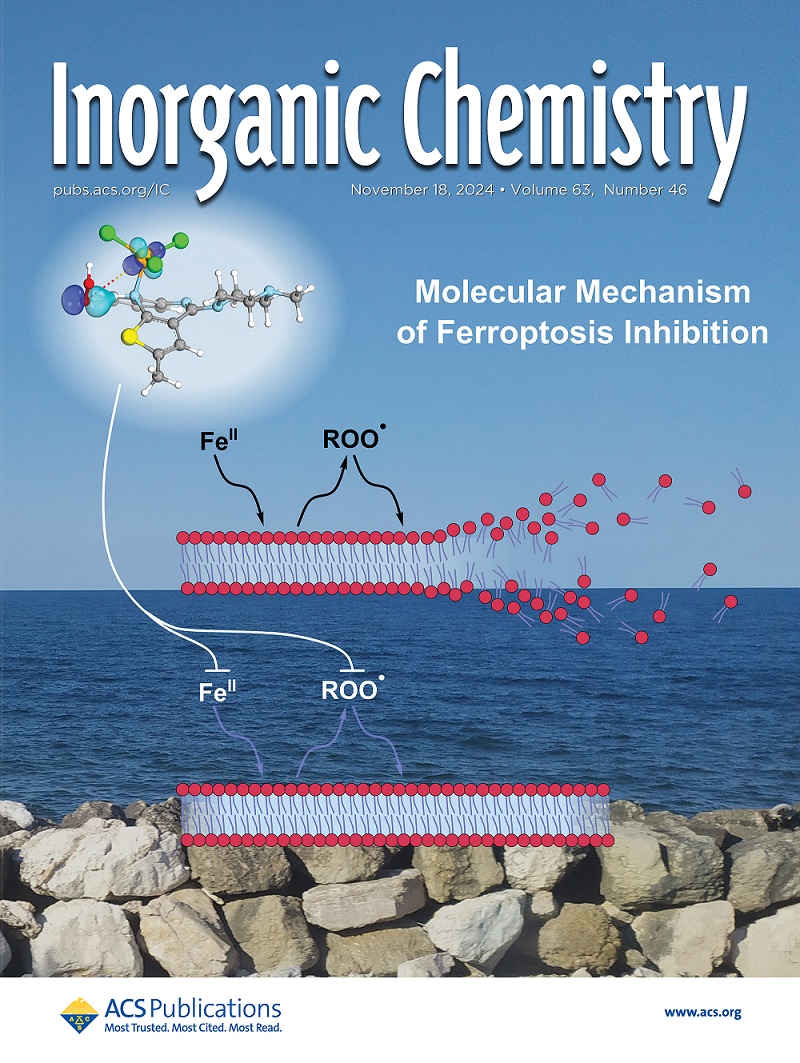Rationalizing Spin-Crossover Properties of Substituted Fe (II) Complexes.
IF 4.3
2区 化学
Q1 CHEMISTRY, INORGANIC & NUCLEAR
引用次数: 0
Abstract
We investigate spin-state transitions in a series of 24 [FeII(bppX)2]2+ spin-crossover (SCO) complexes using density functional theory (DFT). The TPSSh/def2-TZVP approach demonstrates reasonable accuracy in predicting spin-state energetics compared to other functionals, though significant deviations persist in transition temperature (T1/2) estimates. Temperature-dependent and quasi-harmonic corrections for low-frequency vibrational contributions to enthalpic and entropic terms yielded only marginal improvements. To improve T1/2 prediction accuracy, we develop electronic descriptors based on effective fragment orbitals (EFOs) and their occupations, quantifying ligand σ-donation and π-acceptor characteristics that govern ligand field strength. Additionally, we introduce a resonance descriptor (R) derived solely from the effective atomic orbitals (eff-AOs) of isolated ligands. Our analysis reveals that electron-donating groups (EDGs) enhance π-electron density in the ligands while simultaneously reducing both σ-donor and π-acceptor capabilities, ultimately lowering the T1/2 value. These descriptors perform reasonably well also for a set of 12 [FeII(pyboxX)2]2+ SCO complexes. This new methodology provides a computationally efficient framework for modulating spin-state properties in transition metal complexes, enabling rational design of SCO materials.取代铁(II)配合物自旋交叉性质的理性化。
利用密度泛函理论(DFT)研究了一系列24 [FeII(bppX)2]2+自旋交叉(SCO)配合物的自旋态跃迁。与其他功能函数相比,TPSSh/def2-TZVP方法在预测自旋态能量学方面具有合理的准确性,尽管在转变温度(T1/2)估计中存在显着偏差。对焓和熵项的低频振动贡献的温度相关和准谐波修正只产生了微小的改进。为了提高T1/2预测的精度,我们开发了基于有效碎片轨道(EFOs)及其占据的电子描述符,量化了配体的σ-给体和π-受体特征,这些特征决定了配体场强。此外,我们还引入了一个共振描述子(R),该描述子仅由孤立配体的有效原子轨道(ef - aos)推导而来。分析表明,给电子基团(EDGs)提高了配体的π电子密度,同时降低了σ给体和π受体的能力,最终降低了T1/2值。这些描述符对于一组12个[FeII(pyboxX)2]2+ SCO配合物也表现得相当好。这种新方法为调制过渡金属配合物的自旋态特性提供了一个计算效率高的框架,使SCO材料的合理设计成为可能。
本文章由计算机程序翻译,如有差异,请以英文原文为准。
求助全文
约1分钟内获得全文
求助全文
来源期刊

Inorganic Chemistry
化学-无机化学与核化学
CiteScore
7.60
自引率
13.00%
发文量
1960
审稿时长
1.9 months
期刊介绍:
Inorganic Chemistry publishes fundamental studies in all phases of inorganic chemistry. Coverage includes experimental and theoretical reports on quantitative studies of structure and thermodynamics, kinetics, mechanisms of inorganic reactions, bioinorganic chemistry, and relevant aspects of organometallic chemistry, solid-state phenomena, and chemical bonding theory. Emphasis is placed on the synthesis, structure, thermodynamics, reactivity, spectroscopy, and bonding properties of significant new and known compounds.
 求助内容:
求助内容: 应助结果提醒方式:
应助结果提醒方式:


